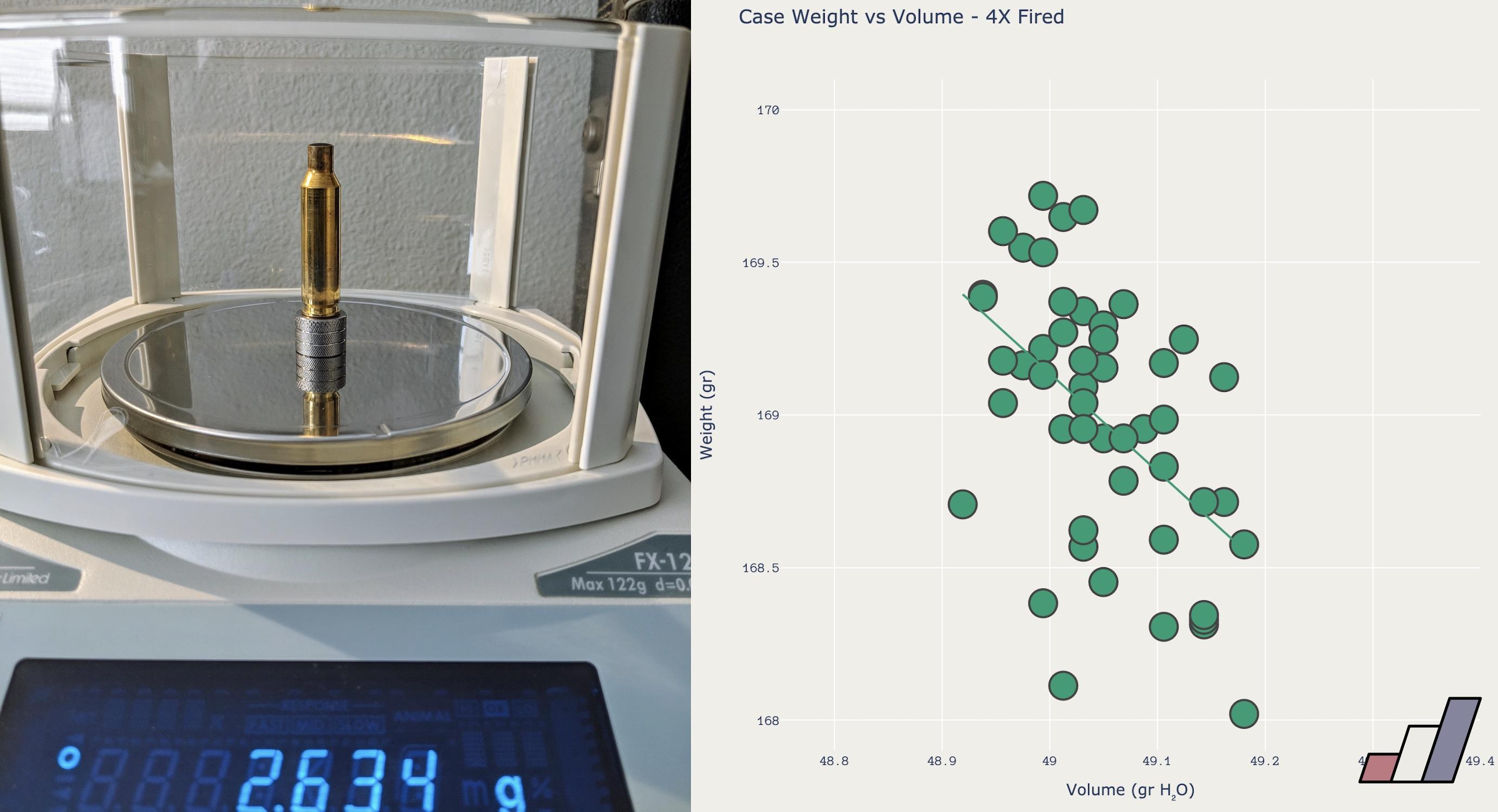I know this is a topic that has been written about very extensively! But what I have never seen discussed is the actual effect of each grain variation in case weight from the average weight of any specific rifle caliber.
My interest in this wasn't so much to understand the above question but rather to control velocity variations in large volume loading of various mfg & differing weight cases, hence improved accuracy and functioning of semi auto rifle ammo.
So without getting into details I used 5.56nato as well as .243Win for an intermediate volume cartridge and .300 Win Mag for a high volume cartridge as control/ confirming tests.
In the 5.56 round I used 55gr .224 FMJ and fired 10 rounds of each case weight from 88gr to 108gr "though I had to settle for less than 10 rounds of some of the heaviest over 100gr" over my chonograph, while varying the load by -0.1 powder as I increased the case weight by each +1.0gr over 94gr and +0.1gr. powder as I decreased the load under 94gr.Case Weight by each 1.0gr. The reason I chose 94gr as point to vary from is because I found that to be, in my experience as the average 5.56 case weight.
I concider this process, or call this process, Loading To Scale! First you must find a load that is safe and reliable for the average case weight in your caliber and then very your charge "as I stated above" from that. I would then recommend that you take a few rounds of the highest weight cases and lowest weight cases and very the charges to confirm what I have realized for myself. This process also shows why it is important to lower your charge from the highest listed charge in your loading manuals! That if you concider that in the 5.56 extreams I tested there is a 20gr variation in CW, that results in a 2.0gr variation in charge weight using my method.
Just one more thing I should mention is that my brass is as uniform as I can make commercial brass, the necks are turned, flashholes deburred, primer pockets swagged, and cases trimmed to uniform minimum length. If you do not uniform your brass as I do you will likely not be able obtain the results that I do! This process is not for everybody, but only for those who's goal is uniformity of large volumes of mixed types of same caliber cartridges.
My interest in this wasn't so much to understand the above question but rather to control velocity variations in large volume loading of various mfg & differing weight cases, hence improved accuracy and functioning of semi auto rifle ammo.
So without getting into details I used 5.56nato as well as .243Win for an intermediate volume cartridge and .300 Win Mag for a high volume cartridge as control/ confirming tests.
In the 5.56 round I used 55gr .224 FMJ and fired 10 rounds of each case weight from 88gr to 108gr "though I had to settle for less than 10 rounds of some of the heaviest over 100gr" over my chonograph, while varying the load by -0.1 powder as I increased the case weight by each +1.0gr over 94gr and +0.1gr. powder as I decreased the load under 94gr.Case Weight by each 1.0gr. The reason I chose 94gr as point to vary from is because I found that to be, in my experience as the average 5.56 case weight.
I concider this process, or call this process, Loading To Scale! First you must find a load that is safe and reliable for the average case weight in your caliber and then very your charge "as I stated above" from that. I would then recommend that you take a few rounds of the highest weight cases and lowest weight cases and very the charges to confirm what I have realized for myself. This process also shows why it is important to lower your charge from the highest listed charge in your loading manuals! That if you concider that in the 5.56 extreams I tested there is a 20gr variation in CW, that results in a 2.0gr variation in charge weight using my method.
Just one more thing I should mention is that my brass is as uniform as I can make commercial brass, the necks are turned, flashholes deburred, primer pockets swagged, and cases trimmed to uniform minimum length. If you do not uniform your brass as I do you will likely not be able obtain the results that I do! This process is not for everybody, but only for those who's goal is uniformity of large volumes of mixed types of same caliber cartridges.


